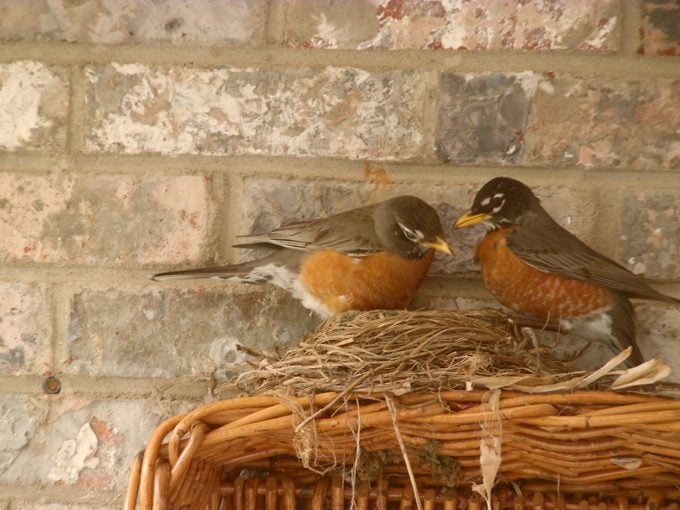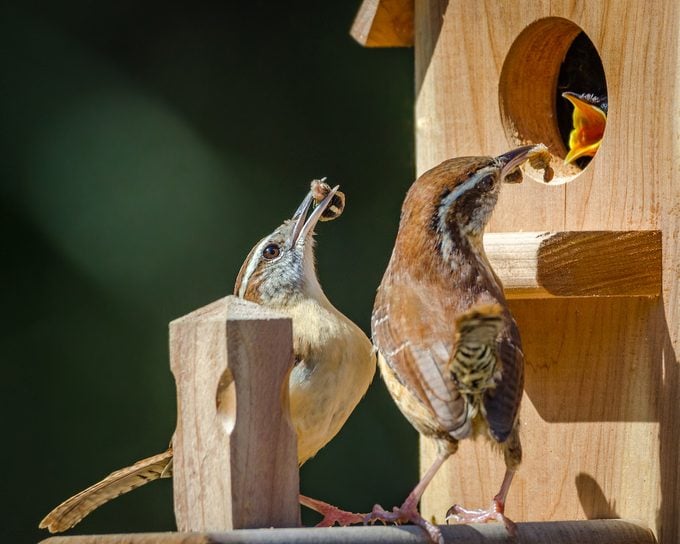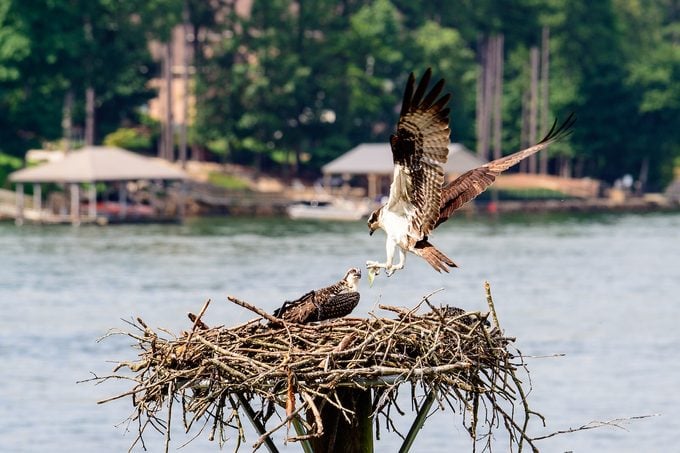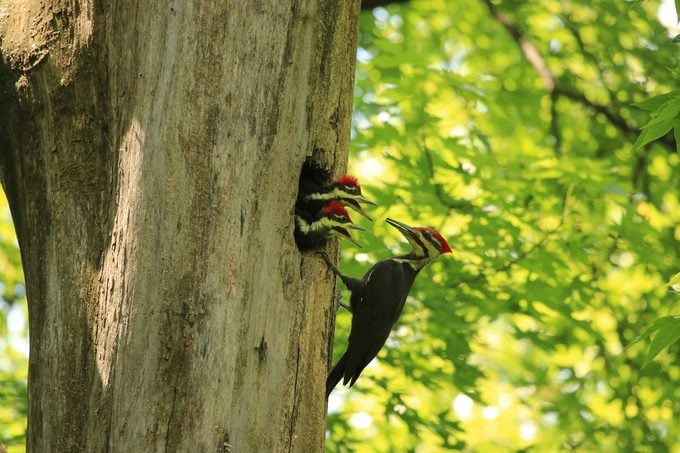Meet the Best Bird Dads and Learn How They Help Out Around The Nest
Updated: Jun. 09, 2020
Celebrate the hardest-working feathered fathers out there! These great bird dads don't fly away when the chicks hatch.

It’s Father’s Day, but the bird dads in our backyard aren’t kicking back and enjoying the warm summer day. A male song sparrow, flecked with brown and white, lands on a tree branch to sing between trips to a hidden nest where his hungry offspring wait for the next mouthful. Meanwhile, a flash of red on the opposite side of the hedge means a male northern cardinal is delivering dinner to his own eager brood.
Dads of some species of the bird world provide more than just meals, though. They help build nests, incubate eggs and stick around even after the moms have left. (To give credit where credit is due, there’s no denying that female birds often wind up with more than their fair shade of parenting duties. For example, male hummingbirds may be flashy, but they’re not very helpful. They don’t even stick around to watch the females raise their young.)
As a salute to the feathers with feathers that do help out around the nest, let’s turn the spotlight on these hardworking parents.
Lending a Wing

A number of backyard bird dads, including cardinals and Baltimore orioles, spring into action once their babies are hatched, flying back and forth with food. Even after the youngsters have left the nest, bird dads feed them for several days to make sure they have the best chance of survival. And if the female starts working on a second nest before the previous brood is completely independent, the male may become super dad and take on caring for the fledglings entirely on his own.
Many males are busy parents even before the eggs hatch. For example, a male American robin brings his female partner bits of material as she constructs the nest. At dawn, he constantly sings from a high perch. It may be a little annoying for his human neighbors, but he’s doing the important job of protecting his territory. Without his vigilant efforts, other robins might invade and eat all the juicy bugs and worms, making it harder for the robin parents-to-be to find enough food for their future nestlings.
Equal Partner Parenting

For some birds, like downy woodpeckers, parenting is a true partnership. Male and female downies work together to carve a nest hole in a dead tree trunk or limb, taking turns chiseling away to create a safe, secure cavity. They both incubated the eggs, too. Mom and Dad take turns during the day, but at night it’s usually Dad who takes over. And once the babies have hatched, both parents help feed them. Sometimes the male downy woodpecker will end up feeding the young more than the female does.
Birds of prey, like hawks and owls, have a similarly balanced parenting style, although males and females take on different roles. Both red-shouldered hawk parents build the nest, for example, but only the female does the incubating and watches over the young once the eggs hatch. The male isn’t slacking off, though. It’s hist job to keep the food supply coming, first for the female as she sits on the egg, and then for the whole ravenous family.
Role Reversal

Some female birds don’t settle for sitting on nests all day. Phalaropes (three species of small sandpipers) are a prime example of this parenting flip-flop. The females are more colorful than males and take the lead in courtship, and one female may have more than one mate. But whether she has one mate or several, she lays a clutch of four eggs for each of them, and leaves new dads to incubate eggs and raise young.
Spotted sandpipers, common in ponds and streams in most of North America, have a similar parenting technique, but for a long time scientists didn’t realize it because the males and females look nearly identical. These days, we know that spotted sandpiper dads do most of the incubating and tending to the young. The moms are too busy laying clutches of eggs with other dads to help out!
Whether they’re endlessly hunting down food or shouldering all of the raising and rearing themselves, bird dads are pretty amazing. From strong nests to healthy fledglings, bird dads make it all possible.
Bird Dad Awards
Birds that go beyond the call of daddy.
Best Builder: The male house wren is serious about nest-building, because it’s what helps him attract a mate. He starts constructing a few nests at once, and his female partner chooses the most promising one and finishes it.
Best Incubator: Northern flicker fathers do the heavy lifting when it comes to keeping the eggs warm. Their incubating duties leave them sitting on eggs all night long and half the day as well.
Best Provider: While a snowy owl mom is busy with the nestlings, the dad brings food to keep everybody fed. If it’s been a particularly good year, he may leave a large stockpile of dead lemmings and other rodents around the nest.
Best All-Around Parent: Not only do male sandhill cranes help with nest-building, incubation, and feeding their young, but families stick together through fall migration, winter and the beginning of spring migration. Young cranes learn and benefit from both parents.

